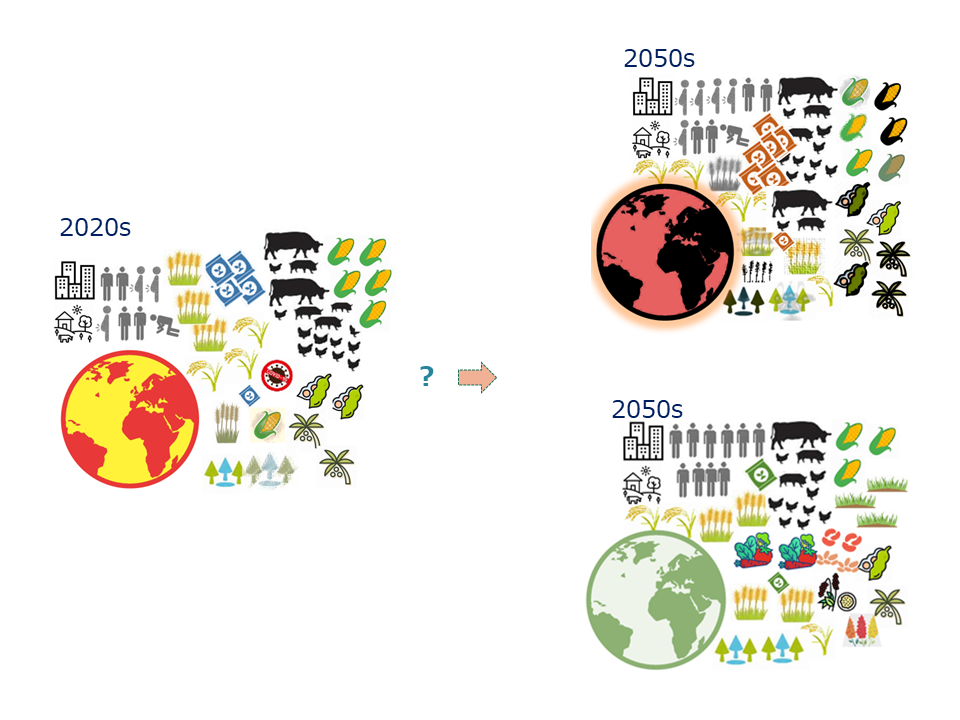Pick Up
1215. Earth's limits and food system transformation

1215. Earth's limits and food system transformation
On March 10, 2025, the UN Food Systems Coordination Hub released a policy brief, Transforming food systems to return to Earth's limits, calling for the need to transform food systems from the perspective of the Earth's limits.
The global food system directly supports the lives of more than 1.2 billion people, and of the rural population, which accounts for almost half of the world's population, agricultural households account for up to two-thirds of people living in extreme poverty around the world.
Since 1961, per capita food supply has increased by more than 30%, but this has also been accompanied by increased use of nitrogen fertilizer (an increase of about 800%) and irrigation water resources (an increase of more than 100%), as well as increased consumption of animal protein (41% of total protein intake) and increased food loss and waste (25-30% of all food produced is lost or wasted). Despite this, an estimated 733 million people will be chronically undernourished in 2023, and 22% of children under 5 years of age will be stunted (low height for age) and suffer from long-term undernutrition. In 2022, more than one-third of the world's population will not have access to a healthy diet, and 30% of adults and 6% of children will be overweight or obese. Suboptimal diets are a significant preventable risk factor for non-communicable diseases. This means that the global food system is in dire need of interventions for sustainable transformation. The global food system is a major driver of violations of five planetary boundaries: climate change, biosphere integrity, land use, freshwater use, and nitrogen and phosphorus cycles. Unsustainable agricultural practices and diets disrupt the Earth system and undermine the long-term sustainability of the food system. Projected changes in population, diets, and income levels between 2010 and 2050 are expected to increase the environmental impact of the global food system by 50-90%, reaching Earth system limits globally.
Transforming the global food system by 2050 could make it possible to feed the world's population within planetary boundaries. Early modeling studies estimated that the current food system could only provide a balanced diet for 3.4 billion people if boundaries for biosphere integrity, land system use, freshwater use, and nitrogen flows were strictly respected. However, more sustainable production and consumption patterns, including optimal allocation of arable land, improved water and nutrient management, reduced food waste, and dietary changes, could support 10.2 billion people within these four global limits.
In addition, carbon sequestration in soils and agricultural biomass in low- and middle-income countries has the potential to help keep the global food system within the limits of climate change. Carbon sequestration in agricultural land could generate significant additional income for producers around the world. However, there are many barriers to monitoring and implementation, and existing studies tend not to consider the negative impacts of climate change and environmental degradation on food systems and food security.
Science should provide practical knowledge and solutions to transform food systems. In particular, trade-offs, externalities, and costs of inaction must be carefully considered to ensure that solutions benefit, especially the most vulnerable in society. It is essential to translate global scientific assessments into actionable knowledge at national and local levels. Strengthening collaboration among food system stakeholders is essential to increase inclusiveness, transparency, and accountability. Sharing lessons learned and experiences will enable adaptive learning and response actions. Science-based, participatory and holistic transformation processes need to be established at various scales, from global to national and local.
(References)
UN Food Systems Coordination Hub (2025) Transforming food systems to return to Earth's limits
https://www.unfoodsystemshub.org/docs/unfoodsystemslibraries/sac/sac-th…
Contributor, IIYAMA Miyuki, Information Program
